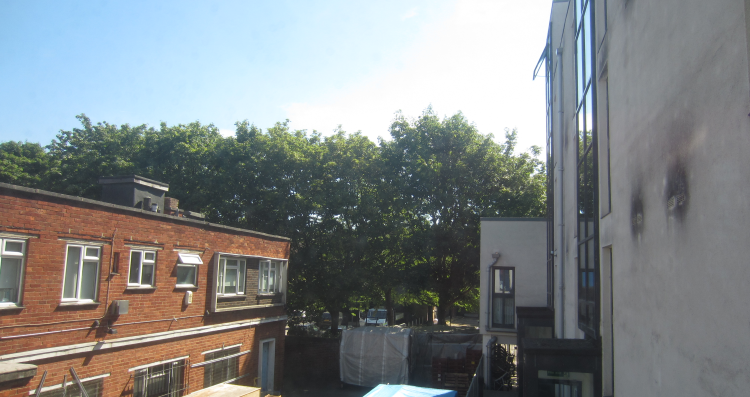The Council (actually the Cabinet says No!), so does the Mayor of London. (Actually what they say is more complex, I was channeling Little Britain.) The Council says go ahead with the Developer’s current plans, so does the Mayor of London.
Len Duvall, the area’s London Assembly member, reports the Mayor of London’s decision in a press release called “Old Tidemill Garden could be lost for ever“. Crosswhatfields reports the lead up to the Council decision in an article called “Save Tidemill & Reginald House update“.
It would seem that the Cabinet want the houses now, are frightened that the developer will walk, or sue the council, and that grant support for the project will be lost through delay if they voted to instruct the developer to consider the alternate plan, which is designed to provide the same number of houses.
Here’s the alternative plan, which the developers have rejected, and the Council has not reviewed. It saves both the current council houses, and the Garden.
One of the increasingly powerful arguments for keeping the Garden is its role as ‘lung’. Given the amount of building work surrounding the area; its 3.3 thousand metres2 protects people from the shit created by the building works at Deptford Church,the Tidemill site itself, and the coming Creekside development.
I have been told that the Council believe they are replacing this capability, but if so it would be a departure from previous practice. A friend writes,
There will NOT be an increase in ‘publicly accessible space’, as claimed by Council officers. The new public realm is said to be 3915sqm, but more than 50% of this (1973sqm) is private courtyards. 20% of the remainder is hard landscaping, leaving only 1565sqm of public green space. The current garden and the lawn on the corner are 3364sqm in total. What is offered is 1799sqm less, which represents a net loss (or deficit) of 53%.
, although see the comment below.
Here is a picture of some of the trees that’ll go, although they’d going both plans.
I wonder what the next steps are.
This is a missed opportunity for the new Labour Group.
ooOOOoo
Other articles on this blog are tagged “tidemill gardens” and I wrote up my notes during the initial planning consultation on my wiki, in an article called “Giffin Street Redevelopment“. …


